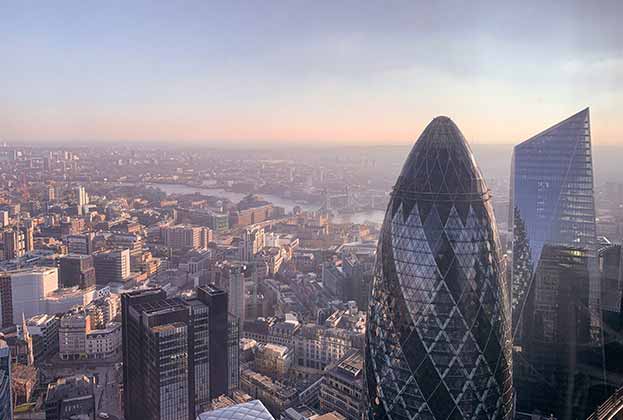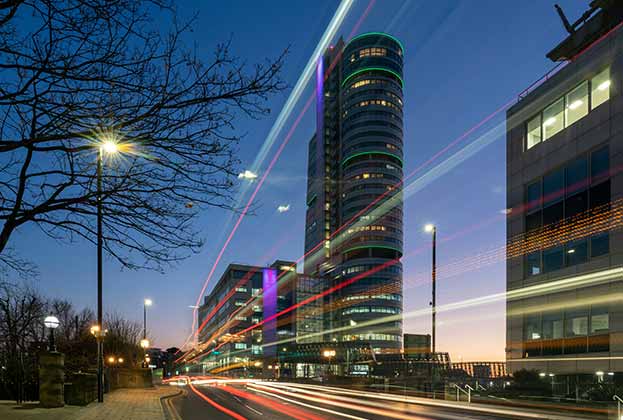When we talk about sustainability in the workplace, especially in the face of Covid-19, health and wellbeing are increasingly seen as essential metrics.
Landlords and developers are looking to enable and promote happier and healthier workforces. This is manifesting itself across a number of areas, from building design, air quality and green space to amenity provision, access and sustainable modes of transport.
The pandemic has highlighted how buildings can affect our wellbeing. So as we look to the return to the office, how can occupiers create spaces that enhance the physical and mental health and wellbeing of their employees?
Density in offices had been rapidly increasing over the last 10 years: in 2012 offices had 12 sq m per person, but by 2019 that had reduced to six sq m per person. Post-Covid-19 some occupiers may reverse that position – they could adopt lower densities, bigger desks, more space between desks and wider corridors. These are all things that will allow people to feel that they can distance from others and that they’re not being crammed in. Due to the heightened levels of anxiety, many companies may introduce more quiet/ private spaces too.
WELL Building Standard, a certification which recognises buildings and organisations that deliver more thoughtful and intentional spaces that enhance human health and wellbeing, is one way of tracking progress in this area. Cundall’s office at One Carter Lane, London was the first office in Europe to achieve a WELL certification in 2016, while the Crown Estate’s head office at St James Market, again in London, was the first in Europe to achieve a WELL Platinum rating.
Bruntwood’s redevelopment of 111 Piccadilly in Manchester from a 1965 office block into one of the UK’s smartest buildings is another key example. The scheme is the first flexible workspace in Europe to achieve a Platinum WELL rating, which is reflected in rents quoted at a 20 per cent premium in comparison with other refurbishments in the city. Buildings with a WELL Core Certification communicate to tenants that landlords are committed to partnering with them in creating a healthy environment for their employees.
Making buildings healthier and more attractive places to work will support employee retention and have a positive impact on the reputation and image of companies. Millennials are 81 per cent less likely to move jobs in the next year if their employer focuses on employee wellbeing, according to a recent Gallup-Healthways poll.
It can also increase productivity. Research linking workplace output and building design shows that access to daylight, views of nature, individual temperature control and other design measures can positively influence worker productivity and, according to the Environmental Protection Agency improved indoor air quality can result in up to 11 per cent gains.
Upfront investment by landlords and occupiers in wellbeing therefore serves a dual purpose: it can not only make for a happier, more contented workforce, but bring business gains.
Further information
Health and wellbeing certifications offer people returning to the workplace peace of mind
.jpg)
-impact-the-office-sector(1).jpg)

.jpg)






